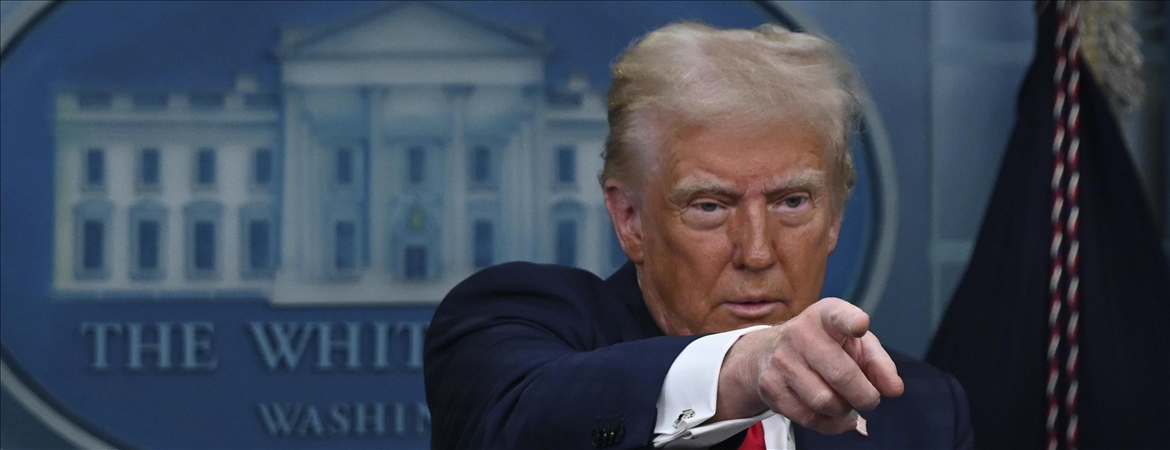The events of 2023 have significantly diversified potential geopolitical and strategic scenarios for 2024.
Over 4 billion people will participate in elections throughout the year, highlighting critical ballots in the United States, Russia, the United Kingdom, India, Taiwan and Bangladesh. Key issues like Ukraine,
Gaza, the Taiwan dispute, Iran’s nuclear program, the Israeli-Arab conflict in the Middle East, uncertainties in energy prices and unforeseen developments due to climate change might instigate shifts that deeply impact international politics.
Over the past 24 months, 78 conflicts have either reignited entirely or seen previously frozen conflicts re-entering active conflict phases. This is one of the most prominent facets defining the conflict landscape within the international system.
Systemic chaos
The uncertainty surrounding systematic changes and transformation remains, with the U.S. position playing a pivotal role. A serious challenge to the global standing of the U.S. persists across various domains. While China may not presently balance the U.S. militarily, it holds the potential to do so in specific sectors in the near future. This prospect could grant China a regional balancing power against the U.S. Furthermore, a notable assault on the U.S. military presence in the Middle East has surfaced, particularly post-Oct. 7, jeopardizing its position.
Economically, the U.S. leads as one of the largest economies, surpassing the combined economies of Europe and China. Yet, the global economic landscape continues to witness significant challenges to U.S. economic hegemony, notably from regional powers like India. Diplomatically, the moral ascendancy of the U.S. appears diminished, especially during the Gaza conflict,
eroding American diplomacy’s credibility. The Joe Biden administration’s goal of establishing a rules-based international order has faltered, fostering justification for unruly behavior by other global actors.
Another systemic concern is Russia’s continual occupation of Ukraine. Russia’s unchanged geopolitical objectives aim to transform Ukraine into a Black Sea-closed state. With Finland’s NATO membership and the possibility of Sweden’s NATO accession, Russia’s goal has intensified. Yet, Russian President Vladimir Putin is unlikely to achieve this ambition by 2024. Consequently, a stagnant battleground emerged in the Ukrainian conflict, with a disparity between high operational intensity and Moscow's inability to achieve its geographical aspirations.
While the West offers substantial military aid to Ukraine, it has not decisively shifted the situation on the ground against Russia. Diplomatic progress remains stagnant, inhibiting Ukraine’s advancement toward peace negotiations, hinging on the complete withdrawal of Russian troops from Ukrainian territory. The Ukrainian peace plan appears entrenched, foreseeing a continuation of the current status quo in 2024, with the U.S. presidential elections possibly influencing the Ukrainian process.
Likewise, Russia’s upcoming election is unlikely to disrupt Putin’s presidency, consolidating power unless an unforeseen event alters the trajectory. This may impact Russia-Europe relations, especially if former U.S. President Donald Trump secures a victory, potentially empowering Europe’s autonomous stance on Ukraine.
Uncertain future of the Middle East
Beyond Ukraine, the Israeli-Gaza conflict represents another significant front in the Middle East. The prolonged nature of Israel’s attacks in Gaza hints at its continuation, risking more civilian casualties and a potential spread of conflict to neighboring nations. While Israel might achieve military victories, it could face
strategic losses regionally. The prolonged conflict threatens the foundations laid by normalization and the Abraham Accords. Postwar, Israel's
expanding security strategies could include Syria and Iraq, which may heighten tensions with Iran.
The likelihood of forming an anti-Israeli political bloc in the region looms large, potentially prompting the U.S. to reconsider its Middle East withdrawal strategy, possibly increasing its military presence. A Trump administration could alter this dynamic, fostering a new alliance between the U.S., Israel and Saudi Arabia.
Yemen remains another conflict zone likely to escalate. The unresolved issue of Iran’s nuclear program could prompt a
Middle East nuclear arms race, potentially drawing Saudi Arabia and Türkiye toward this axis.
The cost of Israel’s ongoing war in Gaza holds paramount importance for these scenarios. Türkiye’s role in these dynamics remains intertwined, necessitating a dynamic foreign policy in a highly competitive and aggressive regional environment in 2024.
Imagine the scenario before Oct. 7: Saudi Arabia was in the process of brokering an agreement with the Houthis to halt the Yemeni war, negotiating another agreement with Israel and witnessing the establishment of a structural foundation for normalization between Israel and Türkiye. However,
none of these are valid today.
Contrary to expectations, the region might witness a resurgence of competitive and aggressive processes.
[Daily Sabah, December 15, 2023]







